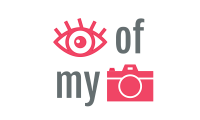Commerical Photography: 5 Tips and Tricks
A few weeks ago I spent time photographing an up and coming teenage singer-songwriter in my area, and wanted to share with you guys what I learned. This was one of my first times photographing for money. Thus, it was a new experience for me, and I would like to share with you guys some of my observations and tricks that might help you get started in the commercial realm of the photography world.
- Use 2 memory cards
During this recent experience of mine, I used two memory cards because I was shooting in raw and one got full, so I happened to use two. However, the first card broke while trying to upload the photographs, so I almost lost some photographs from the first half of the photoshoot (I was able to recover them thankfully). Luckily, I used two cards, so now this will always be a rule of mine. Always use two because if one happens to break, you have some another card with photos!
2. Shoot in raw and JPEG
Usually, digital cameras automatically shoot in the format JPEG. If you go to your camera’s format settings, there will most likely be an option to shoot in RAW and JPEG. RAW files have more information and take up a lot more storage, but they are worth to use, especially if photographing commercially, because they will offer the most precision for your clients. Having the photographs in a JPEG format as wel will allow you to look through the straight on your computer since RAW can only be seen if opened in Lightroom.
3. Charge by the hour
The first time I shot with a client, I gave them a flat rate. This is fine, but the shoot lasted longer than I expected, and I realized that I did not anticipate that this much of my time and energy would be spent when I originally gave my price. Thus, I suggest charging by the time spent, so your time is valued and can be compensated accordingly.
4. Brainstorm and take notes beforehand
Always be prepared!!! That is obvious to some but others might not comprehend how well one needs to be prepared before a photoshoot. You should know the client’s expectations beforehand and see any reference photos (if applicable). Then, do your homework prior by brainstorming specific body poses, hand placement, props, etc. that will give your client the desired look they want.
5. Have a deadline for final photos
Giving yourself and your client a specific date or range of dates when final, edited photographs will be shared with your client is always a good idea. This gives you a personal deadline where you can plan accordingly, while also giving your client an idea of when they will be sent, so they do not wonder for days or weeks waiting for them.
Hope this helped at least some of you as you are getting started with commercial work! Let me know if you have any questions or any other topics you would like me to write about in my next post by commenting down below!
Follow my instagram for updates about future posts!
